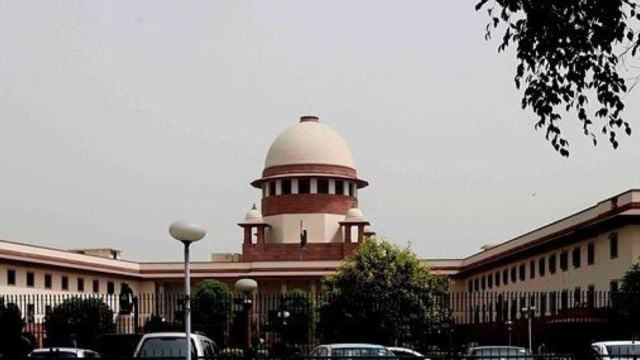‘When human lives at stake, matter needs utmost sincerity’: SC acquits death row convict
Court sets aside HC order against man convicted of killing wife, 2 minor children, sister-in-law in Punjab.
 The FIRs, he argued, are vague, overlapping, and have been filed by politically affiliated complainants to settle scores. (File photo)
The FIRs, he argued, are vague, overlapping, and have been filed by politically affiliated complainants to settle scores. (File photo)The Supreme Court on Wednesday set aside the conviction of a man sentenced to death for killing four members of his family, including his two minor children, in 2013, saying the prosecution has failed to establish the charge beyond reasonable doubt.
A bench of Justices Vikram Nath, Sanjay Karol and Sandeep Mehta said “there are major contradictions in the testimonies of key prosecution witnesses, accompanied by glaring investigative defects” in the case.
Writing for the bench, Justice Nath said, “The standard of proof is an absolutely strict one and cannot be faltered with. When at stake are human lives and the cost is blood, the matter needs to be dealt with utmost sincerity. Therefore, given the facts and circumstances of the case and in light of the above discussion, we cannot bring ourselves to hold the accused-appellant guilty of the charged offence as his guilt has not been proved beyond a reasonable doubt.”
As per the prosecution, Baljinder Kumar alias Kala killed his wife, daughter, son and sister-in-law and injured two others on November 29, 2013 in Punjab’s Kapurthala. He was angry with his mother-in-law who had arranged his sister’s marriage, which did not work out, and stood as a guarantor for a payment of Rs 35,000 maintenance to his sister after divorce, but the payment was not made.
Baljinder had fights with his wife over this following which she left for her mother’s home with their children on November 17, 2013. He had allegedly threatened to kill his wife and children if the money was not paid, the prosecution claimed.
A trial court in 2020 convicted Baljinder and sentenced him to death, which was upheld by the Punjab and Haryana High Court in March 2024.
The SC in its order pointed to contradictions in the testimony of key prosecution witnesses (PWs). After examining the statement of PW1 and PW2, it concluded that “PW2’s presence at the crime scene as an eyewitness is highly improbable as she is thoroughly self-contradictory about the unfolding of events on that fateful morning. Therefore, her existence as an eyewitness also has to be ruled out”.
It said that “these jarring inconsistencies suggest that the statement of PW2 is highly shaky, varies at every other turn and is not reliable at all”.
The judgment also said PW1/complainant, “while getting the FIR registered, had stated that the accused was carrying a ‘datar’ while exiting the crime scene. However, in the later statements made by PW1 before the court, which were recorded after the alleged recovery of the weapon… PW1 readily changed his stance and stated to have seen the accused carrying a ‘gandasi’.”
The SC said, “It must be noted that the two weapons are considerably and visibly different, and a rural individual, especially such as PW1 himself, is understood to be adept in such difference and would not ordinarily mistake one for the other.”
The court said, “The trial court as well as the High Court have very conveniently brushed aside such contradictions in the testimonies of PW1 and PW2 by holding that minor contradictions do not go to the root of prosecution case. We are unable to succumb to the view of categorising above-discussed contradictions as “minor.”
It added, “In the instant case, there are different versions of the same set of events which are being told by these witnesses at differing points of time, statements retracted and remoulded as per their convenience, wherein such difference in statements are leading to material alterations in the chain of events. As a result, the prosecution timeline and the fundamental details about the occurrence are not at all corroborated between its two key witnesses. Therefore, we observe that the contradictions in prosecution witnesses’ testimonies, as pointed above, are major ones and carve a gaping hole in the prosecution story altogether.”
The court further said, “We cannot turn a blind eye to the obvious inconsistencies in the depositions of its main witnesses, which indicate deliberate embellishment and coaching, rendering these testimonies unreliable. Therefore, we have no hesitation to hold that no credence can be lent to the testimonies of PW1 and PW2 and their account of being ‘eyewitness’ to the incident or having seen the accused has to be discarded.”
On the testimony of a child witness who was injured in the attack, the court said he did not actually witness the incident. In his cross-examination… he stated that he did not see the appellant as he was half-asleep. “He specifically stated that he did not see the appellant inflicting injuries on the deceased persons”. Therefore, even if his “testimony is treated as completely reliable, it is clear that his statement cannot be considered as incriminating against the appellant for the lack of having witnessed the actual incident”.







